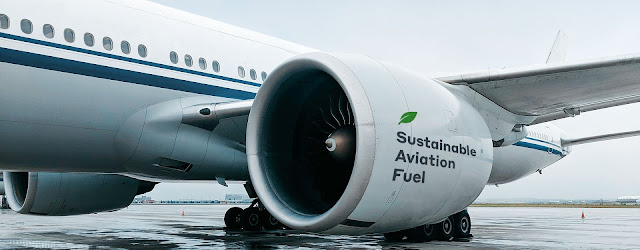Sustainable Aviation Fuel Market is Estimated to Witness Significant Growth Owing to Increasing Environmental Concerns
Sustainable Aviation Fuel Market
The Sustainable Aviation Fuel Market is estimated to be valued at US$ 740.76 Mn in 2023 and is expected to exhibit a CAGR of 61.% over the forecast period from 2023 to 2030, as highlighted in a new report published by Coherent Market Insights.
Market Overview:
Sustainable aviation fuel (SAF) is a type of biofuel used to power aircraft that is produced from sustainable sources such as agricultural residues, municipal solid waste, wood residues and other wastes in order to reduce the carbon footprint of air transportation. Sustainable aviation fuels are drop-in, meaning they can replace petroleum-derived jet fuel with little to no aircraft modification required. They have the potential to significantly reduce greenhouse gas emissions and reduce dependence on fossil fuels.
Market key trends:
Increasing environmental concerns regarding aviation greenhouse gas emissions is a major factor driving growth of the sustainable aviation fuel market. Aircraft emissions account for a significant portion of the transportation sector's climate impact. The production of SAF provides an opportunity to lower aviation's carbon impact while using the existing fuel infrastructure. SAF can reduce carbon emissions by 50–85% compared to conventional jet fuel depending on the sustainable feedstocks and pathways used to produce it. As regulations and standards are implemented to reduce aviation emissions, demand for SAF with their environmental benefits is expected to increase substantially over the forecast period.
Porter’s Analysis
Threat of new entrants: The sustainable aviation fuel industry requires high capital investments and R&D activities which limits threat of new entrants. Bargaining power of buyers: Airlines have bargaining power as buyers due to high switching costs involved in transitioning to sustainable fuels. Bargaining power of suppliers: Fuel producers have moderate bargaining power due to limited number of suppliers in the industry currently. Threat of new substitutes: Alternate fuel sources like hydrogen and electric remain substitutes but their commercial availability for aviation is still uncertain. Competitive rivalry: Intense competition exists among existing fuel producers to capture more market share through cost reductions and product innovations.
SWOT Analysis
Strengths: Growing environmental concerns and stringent regulations are driving demand. Technological advancements are making production processes economical.
Weaknesses: Higher costs of production compared to conventional jet fuel limits mass adoption. Limited global refueling infrastructure available currently.
Opportunities: Incentives and tax credits by governments can boost investments. Potential to replace upto 50% of fossil fuels used in aviation.
Threats: Uncertain fuel blending mandates across countries pose challenges. Dependence on raw material imports increases supply chain risks.
Key Takeaways
The global Sustainable Aviation Fuel Market is expected to witness high growth, exhibiting CAGR of 61% over the forecast period, due to increasing environmental regulations worldwide focusing on reducing carbon emissions from the aviation industry.
North America dominates the global market currently due to supportive government policies and presence of major fuel producers in the US. However, Asia Pacific is expected grow at the fastest pace during the forecast period with China and India emerging as high potential markets.
Key players operating in the sustainable aviation fuel market are Neste, AEMETIS INC., Gevo, Shell PLC, Lanza Jet, and Sky NRG. Neste is currently the largest producer with commercial-scale operations underway in Netherlands and Singapore. Shell is actively expanding its biofuel offerings for the aviation sector.




Comments
Post a Comment